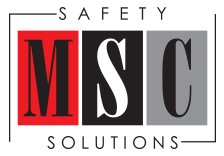Most construction companies know and understand that frequent and regular safety inspections are required to ensure we have a successful safety program.
This is an integral step in ensuring a positive, proactive safety culture.
Under the OSHA standard 29CFR1926.20(b)(2) it states: “Such programs shall provide for frequent and regular inspections of the job sites, material, and equipment to be made by competent persons designated by the employer.”
First, let’s look at the OSHA requirement and then let’s look at what we do with the information we gather.
OSHA, in very basic terms, tells business owners that it is required that you actively look for existing and potential hazards in the workplace. “Frequent and regular”, what’s that mean? Frequency can change depending on the task, training, or equipment used. In simple terms, daily inspections are required. Although documentation is not required, it is highly recommended. In our experience, we have seen that OSHA has an expectation that at a minimum, a weekly documented inspection be conducted by a competent person.
If you don’t document it, you may be cited and forced to prove that the inspections were conducted.
Most of us have no issue with meeting OSHA’s minimum standards. We understand the value in finding and correcting deficiencies. The issue is typically how we set up our program and what we do with our inspection reports. Many companies use these reports to chastise or discipline job site management. This is counter-intuitive to what we are trying to accomplish. Site Management should be rewarded for actively searching for hazards and correcting them before someone gets hurt. The more deficiencies that were found and corrected, the safer the job.
You should reward your people for finding more items, not look down upon them for having a complete and detailed inspection of the job site. Let’s face it, I don’t care how good you are, on any given day a quality Safety Professional can find a handful of deficiencies that need attention. Encourage your staff to find as many items as possible during the week, correct, and log them on your inspection form. Praise them for having a long list of items that were found and corrected, and trust that over a period of time, if you work the process, the number of items found will decrease.
So, we have the first step figured out, now what? I’ve got this form that was sent back to the office, do I just file it away?
Understand that your field has just given you valuable information. The data collected gives us the information needed for developing training and budgets. For example, at the end of the week, our inspection found, 11 ladder issues, 3 eye protection issues, 2 scaffold issues, and 1 fall protection issue. What should we cover in the Monday morning toolbox meeting??? I would recommend we discuss ladder safety.
This is an opportunity to reinforce the company requirements, identify training needs, and enlist feedback from our team. The intent is that by the end of this week, ladders are not on the top of the list. However, if ladders are still your number one issue, you have a management problem, not a safety problem.
Next, the office should log all issues found in a spreadsheet.
If you have multiple projects, drop all the findings into the same spreadsheet. At the end of the month, quarter, and year, you have a list of your top deficiencies. We can use that information to determine what training is needed and what we need for a budget. We can learn so much more from this information. If we log which subcontractor was related to each issue, we can determine which subcontractors we need to assist in developing their safety culture. We also look at the management personnel who are conducting our inspections.
If you have a supervisor who is turning in site inspections with very little information, you know one of two things. He/she needs training in hazard recognition or he/she is not performing at our minimum expectations. Either way, we have created a training moment that supports our Proactive Safety Culture
I encourage you to train your management personnel to actively look for existing and potential hazards in the workplace. Reward them for finding and correcting deficiencies. Use that data to determine who needs what training and create this year’s budget. As the old saying goes, “if you can’t measure it, you can’t improve it”.
This article originally appeared in Colorado Construction and Design Magazine, Winter 2020 edition, page 44.
Author Troy Clark
Troy is a regular columnist for Colorado Construction and Design Magazine






